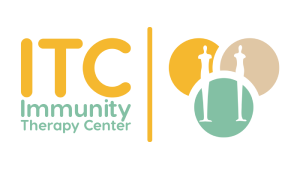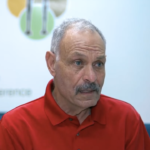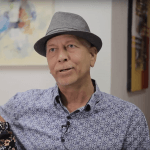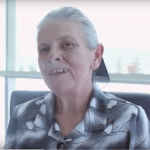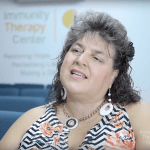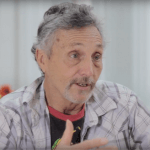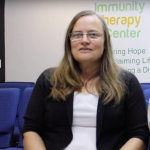Sobre el cáncer de estómago
El cáncer de estómago, también conocido como cáncer gástrico, es una forma de adenocarcinoma que ocurre en las células productoras de mucosa que recubren el estómago. Aunque se usa como sinónimo de la región abdominal, el estómago no es más que el órgano superior del sistema gástrico, responsable de retener los alimentos e iniciar el proceso digestivo a través de la secreción de jugo gástrico.
El cáncer de estómago tarda años en desarrollarse y los síntomas tardan mucho en manifestarse, ya que suele ser una enfermedad de acción lenta. Aunque pueden producirse desarrollos precancerosos en el revestimiento interno del estómago, tales cambios son sumamente difíciles de detectar. Existen cuatro tipos principales de cáncer de estómago, entre ellos:
- Adenocarcinoma – Al menos el 90% de todos los cánceres gástricos entran en esta categoría ya que la mayoría se desarrollan a partir de las células que se forman en la mucosa.
- Tumor del estroma gastrointestinal (TEGI) – Tumores poco frecuentes que se forman en las nuevas células intersticiales de Cajal, las células marcapasos del intestino que se encuentran en el revestimiento de la pared del estómago.
- Linfoma: cánceres poco frecuentes del tejido del sistema inmunológico ubicado en las paredes del estómago.
- Tumor carcinoide – Tumores localizados que comienzan y típicamente permanecen en las células productoras de hormonas del estómago.
Según la Sociedad Americana del Cáncer:
- Se diagnosticarán unos 27.510 casos de cáncer de estómago (17.230 en hombres y 10.280 en mujeres).
- Alrededor de 11.140 personas morirán de este tipo de cáncer (6.800 hombres y 4.340 mujeres).
- De ellos, más del 60% tienen al menos 65 años de edad y es más probable que sean hombres que mujeres.
Causas y factores de riesgo
Las causas y los factores de riesgo del cáncer gástrico dependen tanto de las características inmutables como del comportamiento. Dicho esto, los factores de riesgo más comunes que podrían contribuir al desarrollo del cáncer de estómago son:
- Sexo – Los hombres son más propensos a desarrollarlo que las mujeres.
- Dieta – Si tienes una dieta que consiste en alimentos con alto contenido de sal y baja en frutas y verduras.
- Edad – Casi todos los casos de cáncer de estómago se dan entre los 50 y 80 años, y pocos pacientes lo desarrollan a una edad temprana.
- Raza – Parece haber algún vínculo genético racial con el cáncer de estómago, ya que ocurre más frecuentemente en hispanos, negros y asiáticos que en blancos.
- Consumo de tabaco – La tasa de cáncer en la parte superior del estómago casi se duplica en los fumadores en comparación con los no fumadores.
- Infección por Helicobacter pylori – La infección a largo plazo del estómago con la bacteria H pylori ha sido positivamente relacionada con el cáncer gástrico.
Detección temprana, diagnóstico y estadios
Los signos más comunes de cáncer de estómago y de la unión gastroesofágica son:
- Agotamiento
- Sentirse lleno después de comer poco
- Sentir que está hinchado después de comer
- Pérdida de peso involuntaria
- Náuseas misteriosas y persistentes
- Vómitos persistentes
- Indigestión regular y dolorosa
- Acidez estomacal severa y persistente
- Dolor de estómago
El diagnóstico se puede realizar típicamente a través de una de tres pruebas, incluyendo:
- Ultrasonido endoscópico superior – Durante esta técnica mínimamente invasiva, se pasa un pequeño tubo con una cámara hacia abajo en el esófago para buscar signos de células cancerosas.
- Pruebas de imagen – Se toman radiografías o tomografías computarizadas para hacer un mapa de todo el estómago.
- Cirugía exploratoria – Los médicos a veces recomiendan una cirugía exploratoria laparoscópica para buscar signos de células cancerosas que se han extendido a otras regiones del abdomen.
Etapas del cáncer de estómago
No importa en qué etapa, siempre es bueno buscar opciones de tratamiento y terapia. Hay cuatro etapas de cáncer, pero la etapa precisa depende de la ubicación del cáncer en el estómago, así como de otros factores.
- Etapa I
- IA: El cáncer se ha extendido a través de la mucosa de la pared del estómago.
- IB: El cáncer se ha extendido a través de la capa de la mucosa y puede ser identificado en al menos 6 nódulos linfáticos.
- Etapa II: El cáncer se ha propagado a los ganglios linfáticos cercanos al tumor, o a la muscularis, o a la serosa.
- Etapa III – El cáncer se ha propagado a los ganglios linfáticos cerca del tumor, la muscalaris y la serosa, y ha invadido los órganos cercanos al estómago.
- Etapa IV – El cáncer se ha extendido a los órganos cercanos al estómago y al menos a un nódulo linfático.
Próximos pasos:
El Immunity Therapy Center utiliza una variedad de tratamientos alternativos para el cáncer para fortalecer su sistema inmunológico mientras se dirige directamente a las células cancerosas. El tipo y la combinación de terapias que utilizamos varían dependiendo del tipo y la ubicación del cáncer, la etapa del cáncer y la salud general del individuo. Si usted está interesado en un plan de tratamiento de terapia alternativa personalizada o aprender más acerca de la terapia alternativa para el tratamiento del cáncer, ¡comuníquese con el Immunity Therapy Center hoy!
Fuentes
Leabu, M. NCBI. Interstitial Cells of Cajal and gastrointestinal stromal tumor. (2006). https://www.ncbi.nlm.nih.gov/pubmed/17125601
American Cancer Society. Key Statistics About Stomach Cancer. https://www.cancer.org/cancer/stomach-cancer/about/key-statistics.html
Lui, FH. NCBI. Ethnic disparities in gastric cancer incidence and survival in the USA. (2014). https://www.ncbi.nlm.nih.gov/pubmed/25030941
American Cancer Society. What Causes Stomach Cancer? https://www.cancer.org/cancer/stomach-cancer/causes-risks-prevention/what-causes.html
Terapias que usamosAt Immunity Therapy Center, our goal is to provide objective, updated, and research-based information on all health-related topics. This article is based on scientific research and/or other scientific articles. All information has been fact-checked and reviewed by Dr. Carlos Bautista, a Board Certified Medical Doctor at Immunity Therapy Center. All information published on the site must undergo an extensive review process to ensure accuracy. This article contains trusted sources with all references hyperlinked for the reader's visibility.
Cuidado personalizado para el cuerpo y la mente
Discuta su plan de tratamiento alternativo personalizado con nuestro equipo hoy mismo.
Escuche a nuestros pacientes
See why the Immunity Therapy Center is a trusted name for medical tourism and cancer treatment centers in Mexico.
FAQ's
Select Topic:- Diseases and Treatments
- Our Mexico-based Center and Team
- Patient Expectations and Experiences
- Costs and Travel Arrangements
Diseases and Treatments
Many patients come to us after going through several rounds of chemotherapy, radiation, surgery, and other conventional cancer treatments. Our alternative cancer therapy programs are often more effective and have fewer side effects for our patients than those treatments.
Many of our alternative therapies are designed to boost your immune system so it is better able to recognize, fight, and kill cancer cells without the need of chemotherapy and radiation.
Learn more about our alternative cancer therapies.
We offer the following alternative therapies for naturally treating cancer and other diseases:
- Whole Body Hyperthermia
- Localized Hyperthermia
- Sonodynamic Therapy
- Laser Cancer Therapy
- Insulin Potentiation Therapy (IPT)
- Rife Therapy
- Intravenous Solutions (IV Cancer Therapy)
- Enzymatic Cancer Therapy
- Oxygen Cancer Therapy
- Vitamin and Mineral Supplements
- Laetrile Therapy (Vitamin B17)
- Specific Transfer Factor Vaccine Against Cancer
- Regenerative Cell Cancer Therapy (Peptide Treatment)
- Intraperitoneal Perfusion Hyperthermia
- Viral Anticancer Vaccine
We emphasize immunotherapy cancer therapy, which includes different therapies designed to boost and strengthen your immune system so it can recognize, fight, and kill cancer cells on its own. Immunity Therapy Center is unique because we are able to offer both alternative and conventional treatments in customized, individualized programs.
Learn more about our alternative cancer therapies.
Most treatment programs are completed in three weeks. Depending on the stage and condition of your disease, you may require a treatment program of six weeks or more.
Learn more about our treatment process.
Dr. Bautista will evaluate you once your program is complete and recommend follow-up care. Depending on your situation, this may include alternative therapies, medications, and natural supplements you can take at home, or returning to our center in three to six months for further treatment.
Learn more about our alternative cancer treatment process.
Our Mexico-based Center and Team
We are in Tijuana, a major metropolitan city in Baja California, Mexico, right across the border from San Diego, California. Learn more about our location and our facility.
Dr. Bautista received formal medical training from Baja California State University in Mexico. He also holds a Masters in Nutrition from the same university. He has worked as a Director for alternative medicine hospitals. Early in his career, Dr. Bautista became interested in alternative cancer therapy and treatments and has studied alternative treatments extensively around the world.
Learn more about Dr. Bautista.
Patient Expectations and Experiences
Our alternative, natural treatment programs are completely customized and different for each person. Dr. Bautista personally evaluates each patient to design a holistic, alternative therapy program based on specific needs. He meets with every patient, every day, to monitor and evaluate his or her treatment and progress. This allows him to make immediate adjustments to treatments as needed.
Our entire team strives to make your treatment program a positive experience.
Learn more about our treatment process and listen to some of our patients’ experiences at Immunity Therapy Center.
We treat a wide range of patients with a variety of cancer types from stage 1 to stage 4, as well as patients with different autoimmune diseases, chronic degenerative diseases, and infectious diseases. All these factors, as well as previous treatments and medical history, impact individual success and survival rates.
Dr. Bautista will discuss your condition and chance of success during your initial consultation. Many of our patients do go into remission and see enhanced quality of life following treatment.
Learn more about survival and success rates.
We highly encourage bringing a friend or family member. Having strong support is an important factor in your treatment success.
Dr. Bautista and our nutritionist will discuss your diet with you during your cancer treatment. Your specific dietary needs may vary, but we encourage you to eat a balanced, organic diet as much as possible.
We have an onsite chef that prepares organic, healthy meals at our center.
Costs and Travel Arrangements
A typical three-week treatment program costs $18,995USD, and includes all therapies, diagnostics, and a healthy, organic, breakfast and lunch (+2 juices/smoothies) Monday – Saturday. Room and other board, travel costs, surgeries, and blood transfusions are not included. Some very specific therapies may not be included. Depending on your stage and condition, you may need six weeks of treatment or more.
There are options to help you cover the cost of your alternative cancer treatment at Immunity Therapy Center. Visit our Payment & Financing page to learn more.
Unfortunately, most major health insurance providers do not cover alternative treatments, but there are other options to help you cover the cost of your treatment. Visit our Payment & Financing page to learn more.
We accept major credit cards (some fees may apply), personal and cashier’s checks, wire transfers, and cash. You can also easily PAY ONLINE.
Airfare is not included in the program cost; however, transfers to and from the airport (Tijuana or San Diego) and transportation between our center and your hotel are included.
You may fly into Tijuana, Mexico or San Diego, California. Wewill make arrangements to meet and pick you up at either airport. We are only 25 minutes from the San Diego International Airport. You may also drive to the center. When you schedule your treatment, we will provide detailed driving directions.
Learn more about making travel arrangements to our facility in Tijuana, Mexico.
If you are undergoing outpatient treatment, you will need to stay in a local hotel or other lodging option during your treatment. We are located near several quality hotels in Tijuana, and have arranged special rates for our patients.
Learn more about recommended hotels and accommodations on our Travel Information page.
Start Your Healing Journey with a FREE Consultation
At ITC, we understand the importance of feeling heard and supported. Fill out our form, to speak with one of our experts in the next 24 hours to have a free consultation and guidance, creating a personalized treatment plan just for you. You’re not alone on your path to healing. We’re here to support you through every step!
